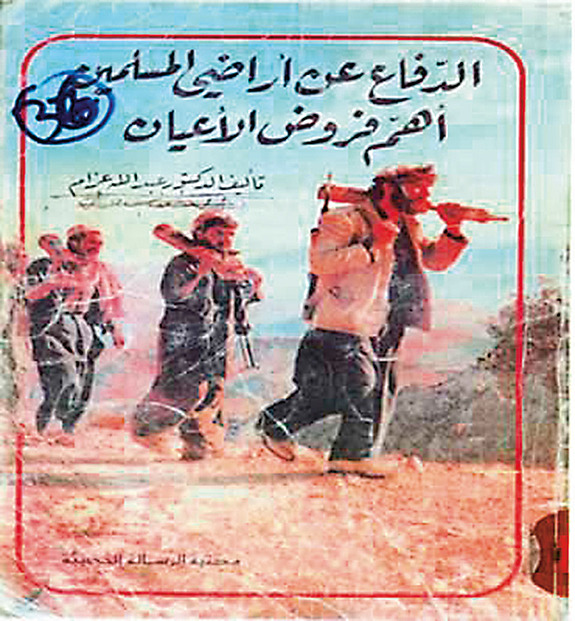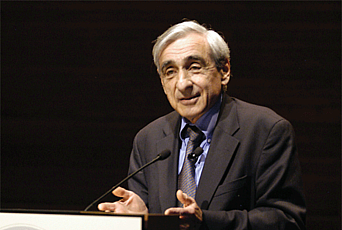Why Jihad Went Global

Jihadism today has a strong transnational and anti-Western character, but this was not always the case. The first jihadists were revolutionaries who fought in their home countries against their respective governments from the 1940s onward. Only in the 1980s did they start crossing borders––mostly to join the anti-Soviet war in Afghanistan––and it was not until the 1990s that they began targeting Westerners. As late as 1992, no American had ever been killed by Sunni Islamists, a fact that is easy to forget in the post-9/11 world.
Put simply, there are two competing explanations for why jihad went global in the 1990s. The first sees Islamist violence as a fundamentally religious phenomenon whose direction is determined by a combination of Islamic theology and modern ideological innovation. If jihadism globalized, it is because ideologues such as Osama bin Laden came along and articulated a new anti-Western strategy. The second explanation views Islamist violence as the expression of political grievance and as a reaction to international political developments. If jihadists shifted focus in the 1990s, it is because international politics changed––America became the sole superpower, and Western military penetration of the Muslim world increased. However, both explanations have limitations. The ideological hypothesis attributes ideological change to the creativity of individual ideologues without explaining why only some ideologies resonate while most others disappear. Meanwhile, the political meddling in the Middle East began in the 1950s (with the Mosaddeq coup in Iran), but only after 2001 did the United States directly invade and ocupy Muslim countries. So why did Al-Qaeda start attacking America in the 1990s?
I spent the past year at the Institute writing a book about Arab volunteer fighters in the 1980s Afghanistan war, a project that explores the roots of transnational Islamist militancy. In it, I propose a third explanation, which links the globalization of jihad to the rise of a pan-Islamic identity movement driven by elite competition within the Muslim world. The identity movement, or "macro-nationalism," was based on the view that all Muslims are one people and face an outside threat from non-Muslims. Its cradle was the western Hijaz region of Saudi Arabia, where several international Islamic organizations such as the Muslim World League were established in the 1960s and 1970s. These organizations were staffed in large part by highly educated Islamists from Egypt, Syria, and Iraq who had fled repression at home. The activists were isolated from any domestic political arena, but free to work in the international Islamic NGO sector. To increase their own budgets and political relevance, they constructed a new type of discourse emphasizing outside threats to the Muslim nation and the virtues of Muslim solidarity. They propagated the message through a variety of channels, notably a host of magazines distributed across the Muslim world. The magazines reported news from across the umma (Muslim nation), with a special focus on Muslim casualties in interreligious wars and the plight of Muslim minorities. The discourse was alarmist, conspiratorial, and xenophobic, but Muslim governments tolerated it for fear of appearing unsolidary towards suffering Muslims. While most Hijazi pan-Islamists advocated only nonviolent action such as humanitarian aid, some ideologues soon began arguing that the outside threat to the Muslim nation required a military response. During the Soviet occupation of Afghanistan in the 1980s, the Palestinian scholar Abdallah Azzam issued fatwas declaring it a duty for all Muslims to get involved in other Muslims' wars of national liberation. Azzam also spearheaded the mobilization of Arab volunteer fighters to Afghanistan in the 1980s, the first in a series of "foreign fighter" contingents that would enter Bosnia, Chechnya, Iraq, and other places. In the early 1990s, the notion of a beleaguered umma inspired an even more radical political project. A small group of battle-hardened "Arab Afghans" led by Osama bin Laden came to view conventional warfare as insufficient for fending off what they saw as a coordinated assault on the Muslim nation. Asymmetrical tactics were required, and they should be directed at the United States, the leader of the "Jewish-Crusader Alliance." In 1998, Bin Laden issued a landmark statement declaring it legitimate for Muslims to kill Americans, civilian as well as military, with any means in any place. However, Al-Qaeda attracted recruits through the same victim narrative as more moderate pan-Islamists. The globalization of jihad can thus be viewed as a three-stage process by which elite competition first produced soft pan-Islamism, which was then militarized, and then "anti-Westernized." Global jihadism is indeed an ideological phenomenon, but one that has more in common with nationalism than religious cults. Moreover, Western policies in the Middle East have often fuelled it, but mainly because there existed an extreme sensitivity to such policies in the first place. Besides, to the extent that material Muslim suffering fuelled pan-Islamism in the 1990s, most of this suffering was not inflicted by America, but by other non-Muslim powers: Serbs in Bosnia, India in Kashmir, Russia in Chechnya, and Israel in Palestine. While each of these conflicts had distinct local dynamics, the pan-Islamists saw them as connected.
Most observers agree that anti-Western jihadism has been in slow decline since the mid-2000s. Al-Qaeda and its affiliates have seen their operational capabilites blunted by counterterrorism efforts, while their popular support has waned as a result of violent excesses in Iraq and elsewhere. Global jihadism will likely not go away in a decade, but we may have seen the worst of it.


